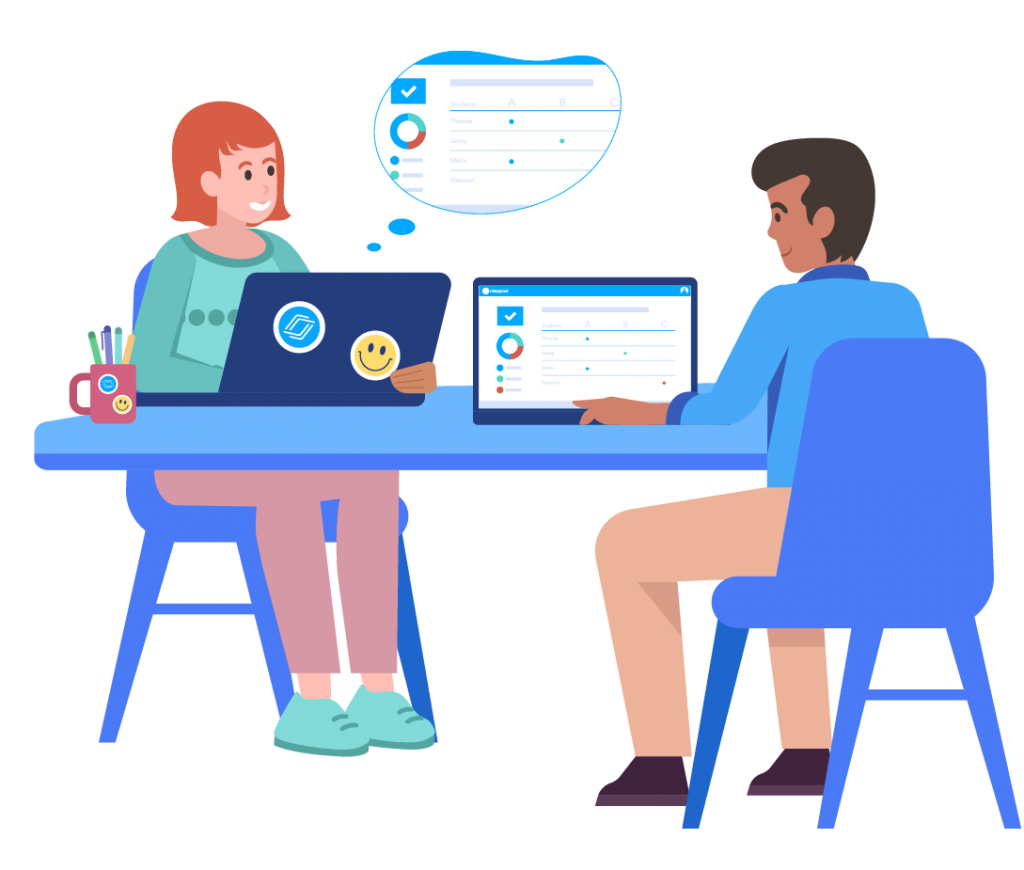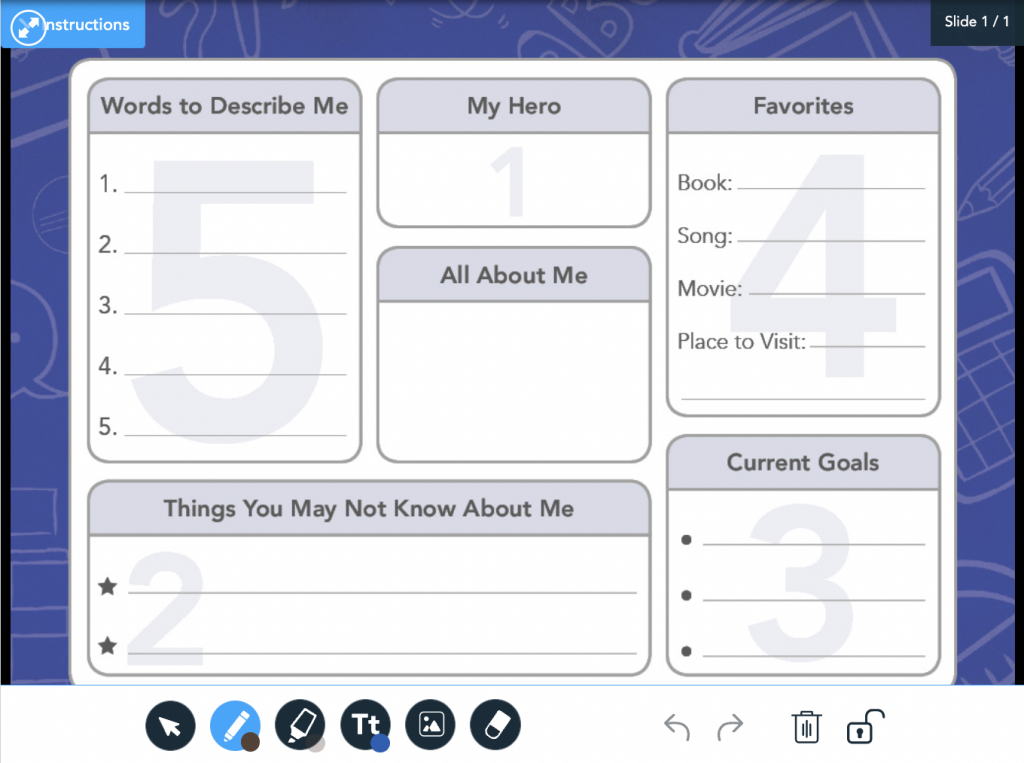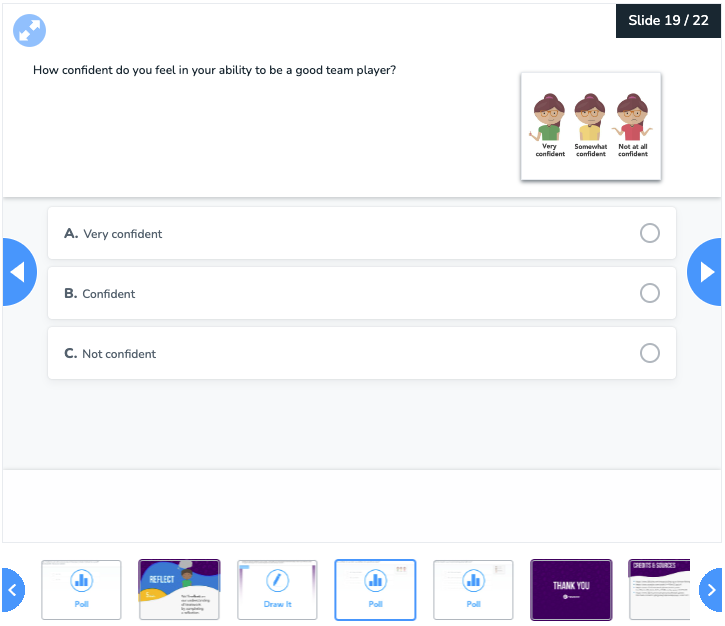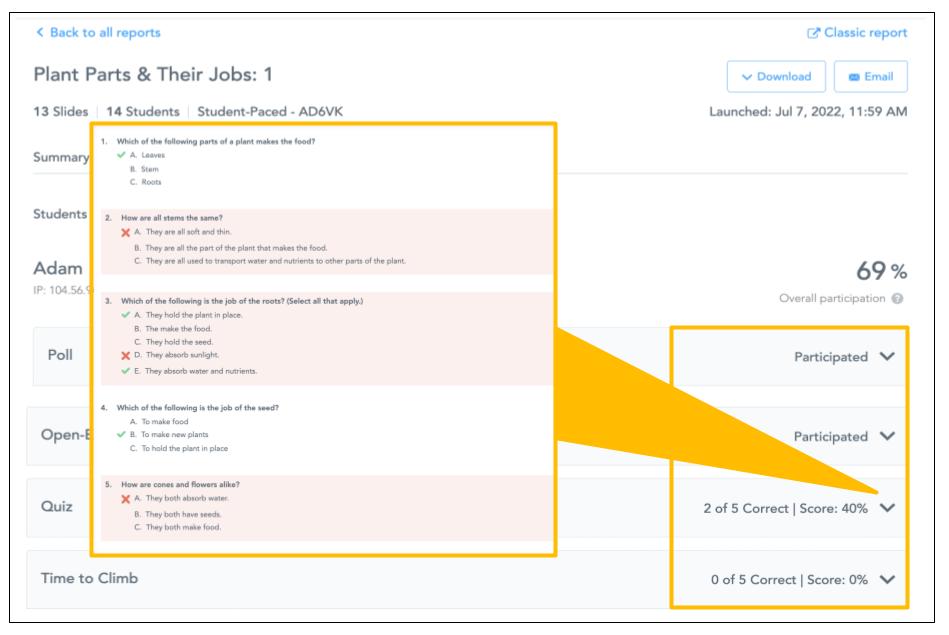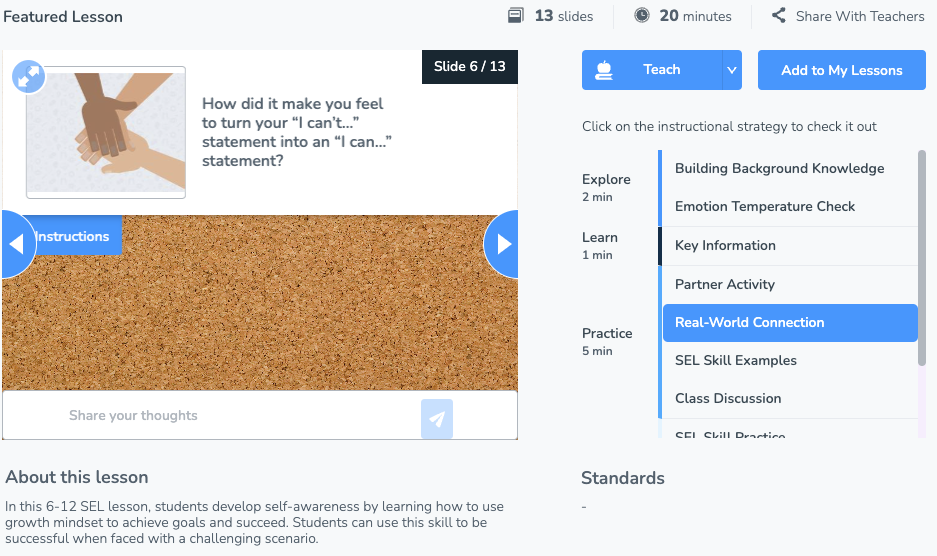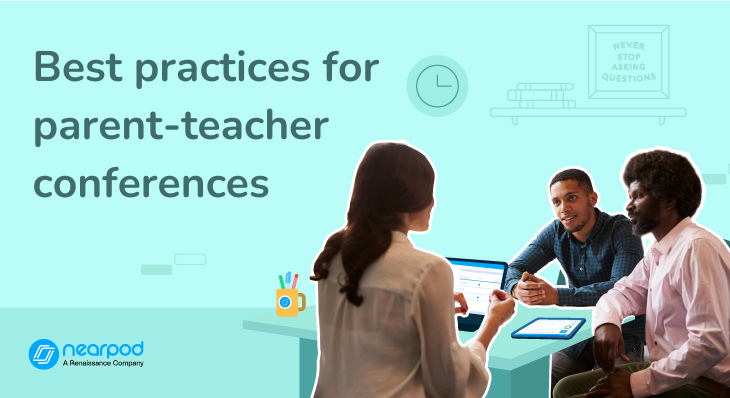
6 Best practices for parent-teacher conference communication
Why are parent-teacher conferences important?
Every teacher knows that one of the busiest weeks of the school year is the week of parent-teacher conferences. These meetings of the minds are vital in establishing open communication between the teacher and a student’s home. In many cases, the fall conferences may be the first time a teacher meets parents and guardians, providing a dedicated time slot for them to get to know each other beyond a quick wave at the classroom door.
Parent-teacher communication, also referred to as home-to-school communication, is instrumental in helping each student be the most engaged, successful, supported, and accountable they can be! Many teachers use a variety of methods to connect with homes—from daily behavior charts, informal notes, and weekly newsletters, to classroom websites, progress reports, and detailed report cards. Today’s technology, with LMS platforms and student information systems, also helps bridge the communication gap by providing seamless messaging options as well as insights into real-time student data (attendance, test scores, etc.). Yet nothing really beats the benefits of face-to-face time to discuss how best to champion a child.
Parent-teacher conferences are usually held once in the fall and once in the spring. These meetings help learn how to build positive relationships with parents as a teacher. That sense of familiarity and trust is key because kids spend over 1,000 hours a year in school (180 days x 6 hours per day). Teachers are often thought of as one of the most influential factors in a child’s life, especially when it comes to academic achievement.
The students’ beliefs about themselves as learners are shaped by the teacher’s communication of expectations for students, so that when the teacher conveys a belief that the student can succeed at school, the student believes it too and acts accordingly.
(Johnston & Shand, 2021)
Maximize your tech tools: Nearpod
When you begin to look ahead and plan for your parent-teacher conferences, consider which materials and tools might help illustrate your points best. Nearpod provides real-time insights into student understanding through interactive lessons, interactive videos, gamification, and activities. Thus, Nearpod can aid your conversation through the individual Student Reports, which provide insight into patterns and trends around participation and a child’s progress in any of Nearpod’s nine formative assessment activities. With an authentic student portfolio or a handful of student work samples, you can begin to provide concrete examples of a child’s strengths and weaknesses and provide personalized recommendations for actionable next steps. Here are some other tips to make the most of your time with family members.
Foster a love of learning in every student with Nearpod. Teachers can sign up for free below to access and create interactive lessons. Administrators can schedule a call with an expert to unlock the full power of Nearpod for schools and districts.
6 Best practices for parent-teacher conference communication
1. Start with small talk
Time is precious, but dedicate about 20% of your time together to getting to know each other better. Prepare some ready-made questions to facilitate this:
- How long have you lived in the area?
- How many kids do you have?
- Where did you grow up and go to school?
Similarly, share a bit about yourself to help establish open communication. You may have started off the school year with a brief student questionnaire or a school climate survey; follow up on an answer to show how invested you are in getting to know the child and their family. Family attitudes and beliefs often influence a child, so use your inquiry skills to learn more about your student’s background and home environment during this conference for effective parent-teacher communication.
Nearpod has a perfect lesson that many teachers use with students at the beginning of the year to help develop a strong student-teacher relationship and foundation.
- Grades K-2 All About Me: In this life skills Draw It template, students can use a graphic organizer to share information about themselves.
- Grades 4-12 Find Something: All About You: In this Collaborate Board activity, students share pictures, videos, or gifs to answer their chosen topic. Then, students “like” and comment on other posts.
When exploring how to communicate with parents as a teacher, consider those questions and prompts for yourself, as a way to share a bit about yourself with families. Many teachers use Nearpod to create a few slides to share at Back-to-School Night that help underscore their personal and professional passions.
2. Let the family ask questions first
You aren’t the only one who feels the pressure of teacher-parent communication at conferences! Many parents “stress” over conferences, not knowing what a teacher might share about their child. Ease their anxiety by asking what their questions are first; this will help foster a positive setting for open communication. Their parent-teacher conference questions may raise a concern or identify an issue that is top of mind. It is good to let them share their thoughts and experiences, allowing you to redirect the conversation as needed. Whether their worries are big or small, their answers will give you insight into how they are approaching the conversation. Conversely, it may prompt you to share your observations from the school year so far. Too often, conferences run out of time, and the last thing you want is to miss giving parents and caregivers a chance to share their thoughts.
3. Have a cheat sheet
Winston Churchill once said, “Plans are of little importance, but planning is essential.” Gather and compile notes and student artifacts that will help you convey how a child is doing not only academically, but also socially and emotionally. With every “negative,” try to bolster it with a positive. While we teachers don’t want to sugarcoat what a child needs to work on, we do want to make sure to invite parents in to be of help, versus inadvertently putting them on the defensive. Finding this balance with good news is essential for effective parent-teacher communication.
With Nearpod, you can give the families some concrete next steps on how best to support their child at home. Maybe a child could benefit from revisiting a lesson on decoding or spending some time practicing how to collaborate and cooperate.
Nearpod makes it easy to share a Student-Paced Lesson with a simple code. Consider trying out one of these activities:
- Grades 3-5 Decoding Words: Consonant Blends: In this English Language Arts (ELA) Drag & Drop activity, students will sort pictures by their consonant digraph.
- Grades K-2 Let’s Work Together: In this social emotional learning (SEL) lesson, students practice relationship skills by examining teamwork responsibilities. Students will receive explicit instruction on SEL skills and authentic group practice opportunities.
*This activity is only available to educators with access to Nearpod’s 21st Century Readiness Program, which has over 400 lessons, videos, and activities to integrate SEL practices into daily learning.
4. Focus on goals
Remember, goals can be short-term and long-term. By asking the parents and caregivers about their goals and by sharing yours, you’ll gather insight into the family’s priorities for their child. You can make sure you are all on the same page while discussing ways to support reaching these milestones—often, a parent is at a loss about where to turn when it comes to resources and experts, so you can share how to take a whole community approach to encouraging children to be their personal best.
During parent-teacher conferences, you want to model a growth mindset and proactively talk about realistic as well as stretch goals. One effective way to do this is by using student reports to gather and present data on how students are progressing toward these goals. Share these reports to illustrate strengths and areas for growth, encouraging parents to provide their insights from home. This collaborative approach ensures comprehensive understanding and alignment in supporting the student’s development, making data-driven decisions, and setting actionable goals that cater to both academic progress and personal growth.
In the Nearpod library of 22,000+ standards-aligned lessons, videos, and activities, you can find lessons that support lifelong skills such as setting goals, building persistence, and developing healthy habits. Showcase the types of content and active learning strategies that you use in the classroom by sharing some instructional resources that students and families can explore together at home.
5. Highlight the student’s voice
It’s all well and good to talk as adults about how we want our kids to flourish, but make sure to involve your students as stakeholders in their own success. Encourage students to start taking accountability for their own learning and achievements. By doing so, they become more engaged and invested in their educational journey. Before your conference, find a way for your students to express their hopes and goals for the upcoming school year. Ask kids to write themselves a letter or draw a motivational poster. They could bring in artifacts to represent their goals, which you can photograph for an end-of-year time capsule. However, you capture their thoughts and share them during or at the end of the conference to spark meaningful conversations at home as well.
Consider the ways students can create their own Nearpod presentations as authentic portfolios showcasing the work they are proud of. Nearpod’s suite of flexible features allows students to capture their ideas in various ways: drawings and images with Draw It, brainstorming with Collaborate Boards, and text or audio with Open-Ended Questions. With Nearpod’s new live teacher-to-student feedback feature, teachers can provide in-the-moment support to boost student engagement and achievement.
Nearpod also has ready-to-teach lessons and activities such as grades K-5 *I Can Grow and 6-12 *Grow and Glow. Invite your students to join the parent-teacher communication experience and engage in the conversation about how they can continue to challenge themselves and reflect on their successes throughout the year.
*This activity is only available to educators with access to Nearpod’s 21st Century Readiness Program.
6. Open your classroom door in other ways
While parent-teacher conferences are instrumental, they are just two moments in time during the school year when it comes to home-to-school communication. As a school, consider the ways that you can invite family members to be part of the overall school community, which can further support parent communication for teachers. In doing so, you will have a stronger school climate, and parents will feel more involved in their child’s day-to-day schooling.
You may want to establish a classroom volunteer program, where family members can act as classroom aides. You may want to host other events such as Back-to-School Night or an open house so that families can learn more about the grade’s curriculum or applaud student work. Invite families to come to all-school assemblies or participate in holiday celebrations or fun field days. Even a quick visit to campus can help parents feel that they are a part of the school’s fabric.
You and your school administrators can leverage Nearpod by creating presentations and surveys to showcase school events (you can even convert existing presentations into a Nearpod interactive format). You can share these presentations with students’ homes as weekly newsletters via the Student-Paced Mode; parents can refer back to past newsletters for important details. Even for adults, the multimedia format promises more engagement, whether when sharing a video or sharing a data-rich graph. You can ask for feedback or gather information via a Poll, Collaborate Board, Open-Ended Questions, or even a Draw It response. Nearpod makes it easier and more efficient to reach families on an ongoing basis.
Start using these ideas for your upcoming parent-teacher conferences
Whether you teach elementary, middle, or high school, these communication strategies will help parental involvement to support learning and their child’s education. Although parent-teacher conferences are two key moments during the school year, it’s important to think about ways to maintain constant communication with families week after week. With today’s 24/7 access, the channels of communication can get overwhelming for all parties. So, try to get a sense of your families’ preferred mode of communication and familiarize them with how you share on a regular basis. Remember that not everyone is tethered to a digital device or has strong wi-fi access all the time. A simple handwritten sticky note with a headline of personalized praise can go a long way when it comes to bolstering parent-teacher relationships and students’ self-confidence!
Foster a love of learning in every student with Nearpod. Teachers can sign up for free below to access and create interactive lessons. Administrators can schedule a phone call with an expert to unlock the full power of Nearpod for schools and districts.

Darri Stephens is a dedicated LX (learning experience) designer, passionate about creating quality content and programs for kids, families, and educators. With MAs in Education from both Harvard and Stanford, and work experience at best-in-class ed tech organizations including Wonder Workshop, Nickelodeon, and Common Sense Education, she is steeped in the design thinking process and committed to agile and iterative project management, which has resulted in multi-award-winning programs and products.
